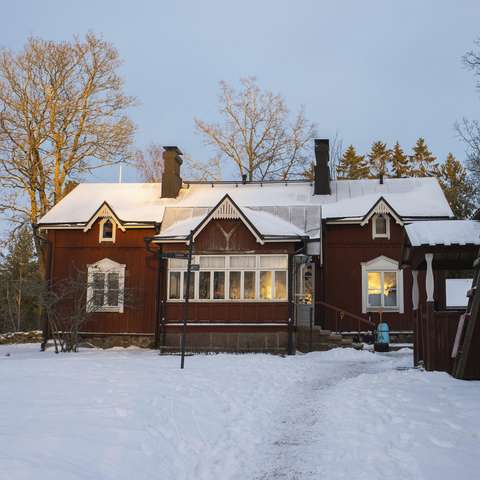KAMU‘s Glims Farmstead Museum reached a new audience record
KAMU Espoo City Museum operates five different museum locations, with the most popular in 2024 being the Glims Farmstead Museum. In total, over 140,000 visitors visited KAMU's sites, including Glims, KAMU WeeGee, the Pentala Archipelago Museum, and the Villa Museum Villa Rulludd. Lagstad School Museum was closed for renewal and the museum will reopen to the public in 2026.
KAMU's community work with residents and Espoo's local communities deepened and resulted in various project and gatherings. A music-themed exhibition, set to open in spring 2025 at KAMU WeeGee, was planned in collaboration with the local community. Once it opens, it will be the first part of KAMU WeeGee's overall renovation. As part of this renovation, the long-standing exhibition "A Thousand Stories from Espoo," which told the history of Espoo, was closed.
KAMU's digital services were developed, and a digital policy was created with the aim of systematically improve the overall digital service experience. The digital policy was created with input from staff, visitors, and other stakeholders. A webinar titled "Inspiration and Tools for Future Digital Services" was held for Finnish museums, and a freely available guide, "Digital Policy Checklist – A Tool for Developing Museum Digital Service Guidelines," was published. The open access section was created in collaboration with the Open GLAM network. The Finnish Heritage Agency granted funding for the project.
In the summer, KAMU hosted an international English-language conference focusing on the history of manor houses, "Manors at War – Manorial Research Seminar." The seminar was organized in cooperation with the international manor house research network ENCOUNTER, the European Network for Country House and Estate Research. Researchers and museum professionals from various countries and institutions attended the seminar.
One of the highlights of the year was the discovery of a bronze-age edge axe, over 3,000 years old, found in the Söderskog fields in Espoo. The axe was discovered in the spring of 2024 by Mirek Veklinets and his son Daniel during a field walk. The axe dates from the early Bronze Age, between 1800-1500 BC, and is the second bronze edge axe found in Finland.
